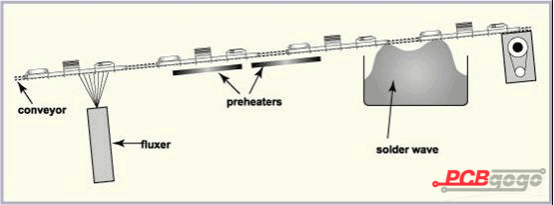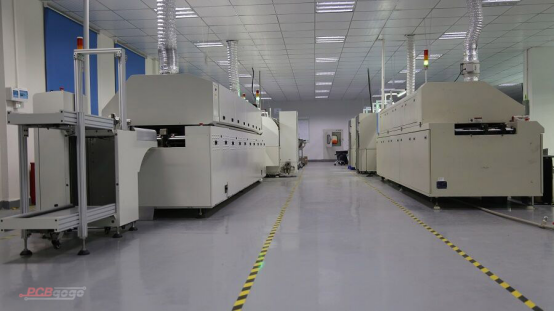How To Distinguish Between Wave soldering And Reflow Soldering?
Soldering technology plays an important role in manufacturing of electronic products and their assembly. And they have been widely used in electronic products because of soldering quality, performance, reliability, high accuracy and speed, and cost-effectiveness. There are two types of soldering for PCB assembly : wave soldering and reflow soldering, and a lot of customers feel confused about the difference between wave soldering and reflow soldering. Now PCBGOGO will explain what are their difference.

What is wave soldering?
Wave soldering is a bulk soldering process that can fabricate a lot of printed circuit boards in a very short time. As well as it works with placing each circuit board on a pan of molten solder. A pump in the pan is creating a“ wave”of soldering that washes on the board, soldering the components to the board. And then safely cooling the PCB and fixing the components in place with a water spray or air blowing.
It’s very important to have an appropriate temperatures during the wave soldering process. And there may be mechanical stress on the board if failing to sufficiently control for temperature so that result in cracks and loss of conductivity. However, insufficient preheating will lead to cavities that may have a great effect on the strength and conductivity for the board. As well as making it easy to take the stress because the wrong soldering temperature can lead to failure to get the appropriate soldering thickness.
Wave soldering process
There are four major steps of wave soldering process as following.
Flux spry: the solder flux is mainly in removing the oxides from the board. And the application of flux offers the lower surface tension, heat transmittance, as well as a smoother soldering process.

Preheating: the board is heating on the tunnel after passing through a tunnel. And preheating creates the activation of flux, as well as the chain that is used for resembles a conveyor belt.
Wave soldering: the solder paste will be a liquid due to high degrees of temperature attained. What’s more, a wave is formed and the components are bonded with the boards.
Cooling: it will be subsequently lowered after the temperature achieves its highest degree or peak value. Once the solder components and the board are cooled adequately, it will start the assembly process.
There are some factors as important as mentioned above. Such as temperature, wave contact duration, the speed of band carrier and so on. So it should be taken into consideration during the wave soldering process.
What is reflow soldering?
Unlike wave soldering, reflow soldering relates to the temporary adhesion of components to the PCB pad, and then permanently gluing and adhering with heat controlled exposure. To create the temporary joint with the use of flux and powered solder. The solder is melted and a permanent joint is coming into being as heating.
Reflow soldering technology, making it possible to reliably solder surface mount components, especially the components with very fine pitch leads. And it’s the best for use with components used in mass produced electronics products.

Reflow soldering process
It needs to place accurately the solder material on the board by using the solder paste stencil. Then placing the components on the pad with using a specialized pencil by the name“pick and place”. the reflow soldering process is as follows.
Preheating: preheating is compliance with thermal profile and do well in removing the volatile solvent that may include the solder paste.
Thermal soak: after the board is rising in temperature, it will go into the thermal soak area. There are two reasons why the card us maintained at temperature, one is to make sure any areas that are not fully heated due to shadowing effects come up to the necessary temperature. The other is to active the flux and remove the solder paste solvents or volatiles.
Reflow soldering: the area of reflow is the area where get to the highest temperatures in the soldering process. The solder is melting here and create the necessary solder joints. And the practical reflow process refers to the flux to reduce the surface tension at the metal joint so that achieve metallurgical bonding, allow the individual solder powder spheres to combine and melt.
Cooling: it needs to be done in a way without any stress to the components for the cooling boards after reflow. Appropriate cooling can restrain redundant intermetallic compound formation or thermal shock to the components. The range of typical temperatures in the cooling zone is 30-100℃ ( 86-212°F ), where is creating the relatively quick cooling rate for the temperature, and it can be a great grain structure in the solder with this method so that offer the most mechanically sound joint.
PCB Assembly with Reflow Soldering And Wave Soldering in PCBGOGO
PCBGOGO is a specialist electronic manufacturing provider with extensive experience in PCB fabrication and assembly solutions for small to medium businesses. We can provide quick turn turnkey PCB assembly with high quality soldering that can meet the demands of electronics production areas.
If you have any questions, please feel free to contact us with service@pcbgogo.com, we will be happy to help you.


